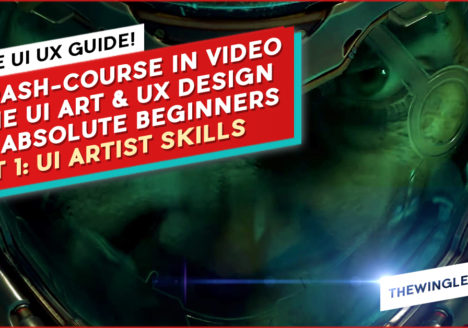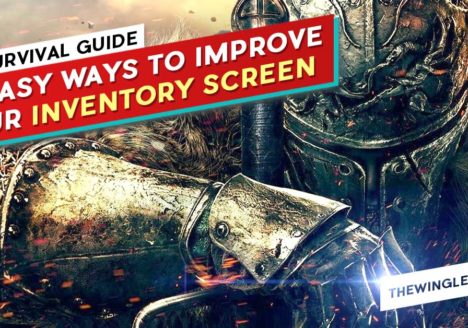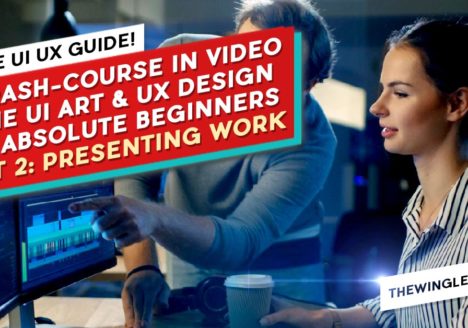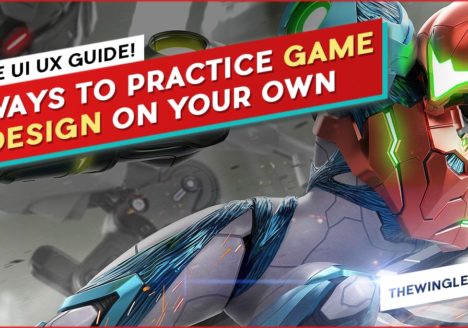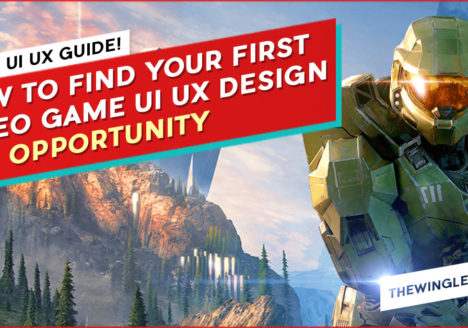What Really Happens in a UI UX Design Interview for Video Games
WHAT REALLY HAPPENS IN A UI UX DESIGN INTERVIEW FOR VIDEO GAMES
WHAT REALLY HAPPENS IN A UI UX DESIGN INTERVIEW FOR VIDEO GAMES
CAREER GUIDANCE AND PREPARATION
So you’re taking your shot at a job in the video game Industry as a UI UX Designer. You’ve got a portfolio (kinda), a resume (ish) and more than enough furlonged freetime to apply to dozens of game companies the world over. But… What if the worst thing in the world happens and you don’t get a rejection letter?
Ah-good-day-to-yous, My name is John Burnett, a UI UX Designer, Art Director and remote UI Mentor of some 20-ish years in the video game industry. In this age of wanting to give back generously to students (and soon to be students), I’ve thrown together this little guide on what to expect in an interview with a video game company as a UI UX Designer. After all, to apply is human – to interview – divine.
If your application sparks any interest, you’ll first receive an email from what I’m going to playfully call a Frontliner. The Frontliner can be anyone from a recruiter, a producer, hiring manager or even the Art Director themselves. To be blunt, their job is to vet if you’re crazy, a liar or generally unviable to work with at a very early stage. The Frontliner will also ask you questions that orbit around your career, your past and your comfort-level(s).
Although the conversation will be sedate, the Frontliner may ask you the most hot-seat question of the entire process: what’s your salary range? Salary negotiations are monumental conversations in and of themselves, but in lieu of the answer you should definitely have an answer. Uncomfortable assigning yourself a dollar-value? Start with the wise words of a former coworker of mine: they’re all made-up numbers.
You may have signed an NDA (non-disclosure agreement) at this point, likely because the game you’ll be working on if it’s still under wraps. The Frontliner will be the first one to lift the veil and tell you what the game is. If you didn’t sign an NDA, the Frontliner will, in very oblique terms, clarify if this is an opportunity you really want, or if you should do some light calisthenics for a graceful bow-out.
Need a quick primer on Green, Yellow & Green Flags during UI UX Design Interviews? Check out this guide real quick!
REAL QUESTIONS SAID BY REAL FRONTLINERS
- So tell us a little about your career history
- Are you comfortable / have you ever made UI UX Designs on the _________ platform / SKU?
- Are you comfortable within the _________ genre?
- Are you familiar with our Company’s games and history?
- Have you ever worked with a team remotely before?
- Are you familiar with any implementation tools like Unity or Unreal?
- Have you ever worked with proprietary UI tools before?
- What made you want to work with our Company?
- What’s your salary range / expectations?
- What’s your hourly rate?
- What’s your per-diem rate? (I was caught so flat-footed the first time I heard this question, I threw out some Dr. Evil-esque price-quote and lost the gig instantly)
- What design software are you proficient in (e.g., Figma, Adobe XD, Sketch)?
- How do you handle constructive criticism on your UI/UX designs?
- Describe your typical design process for a new UI feature.
- How do you ensure consistency across a game’s user interface?
- What’s your experience with user research or playtesting for UI/UX?
- How do you approach designing for accessibility in games?
- Can you describe a challenging UI/UX problem you’ve solved?
- What’s your experience with different input methods (controller, touch, keyboard/mouse)?
- How do you prioritize UI/UX tasks when faced with multiple demands?
- What are your thoughts on current trends in game UI/UX design?
- How do you collaborate with engineers, artists, and game designers on UI/UX?
—If you’re Junior or making the jump, expect these questions as well
- Will this be your first job at a video game company?
- What kind of relevant experience will you be bringing to the Company?
- Are you proficient in Photoshop? … Because that’s all we use here.
- Have you worked in an Agile / Scrum environment before?
- What kind of consoles / PC do you own?
- Do you play games often, especially the kind of games we make?
- How do you approach learning new design principles or software quickly?
- Can you walk us through a personal project where you applied UI/UX principles?
- What aspects of game UI/UX design are you most excited to learn about?
- How do you handle receiving critical feedback on your early designs?
- What steps do you take to understand a new game’s target audience?
- What do you see as the biggest challenge in transitioning to game UI/UX?
- How do you stay updated on general UI/UX best practices?
- Describe a time you had to adapt your design approach to new constraints.
- What resources (books, websites, communities) do you use for learning?
- How do you ensure your designs are user-friendly from a beginner’s perspective?
- What motivates you to pursue a career specifically in game UI/UX?
THE ART DIRECTOR
Passing the First Gate, next you’ll talk with the Art Director – either alone or with their Art Lieutenant of sorts (a Lead or Senior Artist). The AD will lob softball questions at you, mostly because video game Art Directors tend to be fairly UI UX agnostic. However, they will still be fiercely interested in your process and previous work. There is also the likely possibility their Art Lieutenant is a UI UX Designer, and they may ask you the more piercing – but equally tonally placid questions.
The Art Director will definitely ask about your process. Want to learn the basics of video game UI UX Wireframes? Check out this quick guide!
REAL QUESTIONS SAID BY REAL ART DIRECTORS
- Give me a basic overview of your career in your own words.
- Any piece in your Portfolio you want to jump in and start with first?
- So what was the most challenging part of this project? (they’ll specifically cite something in your Portfolio)
- How do you start making a screen? Walk me through your basic process
- So on this screen here, how much of this did you do, all of it? (citing something in your portfolio)
- How do you deal with making UI systems you might not have all the information on?
- Are you comfortable with the _____ genre? Because I’m not seeing very many examples of it in your portfolio.
- What tools do you usually use to make your screens?
- How do you work with Designers to make sure there is clarity and momentum in the pipeline?
- How do you create Systems meant to protect your Coders and save them time / sanity?
- At what point do you give push-back on any feedback? What’s worth “fighting for” on the project?
- How comfortable are you with little guidance? How autonomous are you?
- Have you worked with a small Strike Team before?
- Have you worked alongside a fellow UI UX Designer before (at your level or above)?
- Have you worked with a Coder or Designer before?
- Is there anything in your Portfolio you’re particularly proud of?
THE TEAM
Lastly, you’ll meet with the team in a perfunctory little meet-n-greet to see if everyone can get along for 30 minutes without somebody exclaiming, “There goes the neighborhood!”
If you’re talking to the team, it’s likely you’ve been fast-tracked to an offer that’ll be in your inbox within the week and there’s nothing but daylight.
However…
A word of caution about meeting the Team (gentle reader, please imagine a room full of candles suddenly blowing out). Depending on the Studio’s druid-like traditions, you may not just talk to your immediate Team. You might end up talking to the Executives, as well. This may include the Producer, the Creative Director – all the way up to the CEO and President if the Company is treehouse-y enough.
Indies in particular will spring the Executive trap on you, much less to unnerve you and more to develop group cohesion – especially remote-only Companies. Think Dr. Hammond in Jurassic Park just before an egg hatches: they want everyone to imprint and feel connected. Meeting the Execs will rarely happen to Juniors in larger firms, but you never know…
What I do know is that Companies want some guarantee you can make a million-dollar project wheeze past the finish line. They don’t want the word of some hugely flying-quotes “relatively” sane Photoshop-jockey on a Zoom call.
They want The Test.
THE TEST
The Art Test is the harrowing in the application process; an elephant graveyard where your bones will crown the marrowworks.
Art Tests can be week-long assignments (in timeline, not necessarily in workload) that happen after you talk with the Art Director but before you meet the Team. The goal is to evaluate your real skills with a real goal amid real constraints. Nobody is expecting a breathtaking masterwork, but they will interpret your Test as the bounding box of your talents and a vorpal-sharp indicator of how well you follow instructions.
Historically, the Art Test is meant for Junior-level artists who don’t have labyrinthine Portfolios or a ton of LinkedIn social proof. Okay, I lied, even Seniors still get the test; and it’s always an annoyance I’ll never tire of Shawshanking around.
In fact, if you’re Senior or charming enough, you can actually convince companies to not give you an Art Test. Ask the Art Director if you can make a wireframe for one of their game screens and walk them through your process over Zoom. A week-long Art Test is grueling and ultimately wasteful for all parties. No shame giving them a better evaluation and giving yourself an easier time.
But if you fail every saving roll and simply must do an Art Test, focus on it. There’s a big difference between being rejected giving your all, and being rejected knowing you could’ve done so much more.
“I wish I had tried” are killing words.
A SMALL SELECTION OF ART TESTS I'VE RECEIVED OR GIVEN
- Make a holographic keypad for a group called The Authority – a secretive, menacing technocracy that reigns over an apocalyptic wasteland. Animate this.
- Make a radar for a 3rd person racing game that orbits around the car and points to incoming threats and indicates internal damage. Also make a traditional HUD for car ammo and health on the screen. Animate this. (This and the above were double-tests expected in a week and I got the flu midway through)
- Create an animation showing a horror-genre sci-fi door holographic panel being accessed, unlocked and opened.
- Redesign this console UI screen for mobile specifications – or – alter this mobile screen for 16:9 specs and a controller / keyboard & mouse
- Make a standard, generic pen-and-paper RPG “paper doll” inventory screen with final art
- Take this in-house wireframe made in Google Sheets(!) and give it an art pass. You may alter the wireframe on the fly as you see fit, but use it as your base.
- Take this bullet-point list from a Designer of what needs to be in an Inventory Shell Menu and make a wireframe for it.
- Take a famous game IP and change the genre, but keep the tone – now create the HUD (Deadspace is now a tactics game, Max Payne is an RPG, Pokemon is a FPS…).
THE GREAT HUMBLING
I’ve been part of a AAA studio closure, a round of layoffs from another AAA studio and fella, I’ve lost my share of gigs as a Freelancer. I know The Humbling always hurts, regardless of where you are in your career. In fact, I would argue what makes a Senior-level talent is the grace with which one endures ribcage-splitting rejection. At the best of times, it takes a while to recover.
But these are not the best of times.
As such, please allow this salt-and-pepper Gen-Xer who has made it this far to gift you a light when all others fade.
REAL SOLUTIONS FOR AN UNREAL AGE
- Know yourself at a technical level. When you get devastated by a rejection, literally keep track of how long it takes for you to recover. If you know it takes a humiliating 2 months to recover, fine – but now you know – and now you can improve that number. Hell, even knowing your recovery is that long may infuriate you and instantly shave that number down to a week!
- Do not despair. If you had a harddrive failure for a week, you’d be in a white-hot panic all those 7 days, but you’d spend every minute trying to correct or work around the problem. Despairing for 7 days kills the hunt to fix anything. Despair builds nothing – and no matter what this chaos-laiden future may hold – all better futures are built.
- Have a healthy, supportive network (loved-ones-first) and let them know that you’re applying and where. If you get rejected, they’ll be the first ones to comfort you so you won’t lose precious time wallowing. Also, far better to have people encourage your flailing attempts than for you to flail in shameful secrecy until you get that dream job.
- Keep bolstering your skills. This may seem pithy as hell, but it’s actually at the heart of callusing over naturally. If you’re convinced you can’t do this job, keep making UI and UX designs, and prove yourself wrong. It takes decades of diligent, Renaissanc-y practice to make the interfaces you see in modern games. It won’t be the 5th or the 55th practice to get to their level, so you might as well aim for the 555th, just in case.
- Find ecstasy in the process. You are not your job. You are not hustle culture. You are not valueless if you are not working and your value is not your salary. You are an a-dorkable holy nerd born into a knighthood of Creativity, Craftsmanship, Innovation and Invention. Embrace that most sacred Calling. Dweeb-out on everything and then paint, compose, write, act, invent… don’t just absorb the material. Love. And be loved by it. That’s your damn job.
JOIN JOHN BURNETT'S GAME UI DESIGN MENTORSHIP PROGRAM
THE WORLD'S BEST 1-ON-1 PROGRAM WITH A REAL GAME UI ART DIRECTOR.

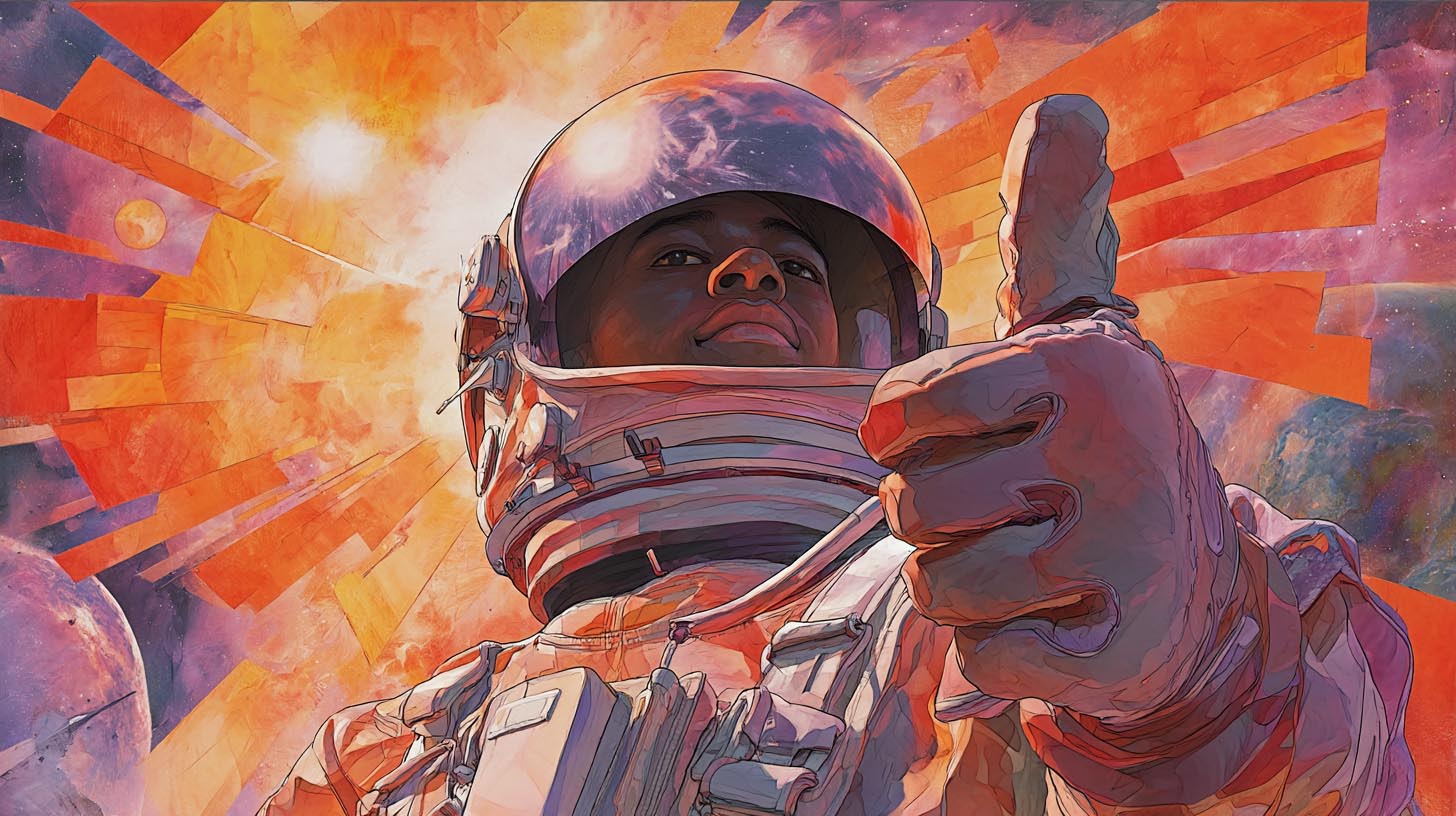
Don’t feel alone and aimless anymore. Join my Mentorship Program in Game UI Design and gain invaluable insight with 1-on-1 instruction with a veteran UI Game Art Director and Artist. Gain Certification, create a jaw-dropping portfolio, and learn from the best. Buy Now Pay Later options available.
A random sampling you might also enjoy:
THE DEFINITIVE EXHAUSTIVE LIST OF LONGTAIL SEARCH TERMS FOR GAME UI DESIGN.
For those of you constantly asking for SEO tips and tricks as it relates to Game UI Design, you’re finally in luck. Yes, I’ve read your emails and I know it’s ultra rare information that nobody is talking about. Finally, I’m compiling a list of all the relevant longtail search terms people (likely potential students and curious on-lookers) use to find this page. It may not be of interest to everyone, hence why it’s on the bottom, but I feel like I am the authority on Game UI Design education and who knows how these search terms will inspire your own web design efforts. Without further ado, the rarest of the rare information, brought to you by a veteran Game UI Design Art Director: longtail search terms for this page.

- what happens in video game ui ux interview
- game ui ux design interview process explained
- insider tips for game ui ux interviews
- how to pass game ui ux design interview
- frontliner screening game ui ux interview
- art director interview game ui ux design
- team meet and greet game ui ux interview
- executive review game ui ux design job
- game ui ux art test requirements explained
- junior game ui ux design interview questions
- senior game ui ux design interview process
- game ui ux portfolio discussion points interview
- how to talk about ui systems in interview
- game ui ux design remote work interview
- salary expectations game ui ux design interview
- hourly rate game ui ux designer interview
- per-diem rate game ui ux interview
- game ui ux design interview preparation guide
- what to expect in a game ux interview
- game ui ux design career history questions
- game ui ux design interview questions and answers
- how to ace game ui ux design interview
- game ui ux design interview red flags
- proprietary ui tools experience interview
- unity unreal engine ui ux interview
- game ui ux design interview behavioral questions
- game ui ux design interview situational questions
- how to showcase portfolio in game ui ux interview
- game ui ux design interview process flow
- understanding game ui ux wireframes interview
- game ui ux design interview for specific SKU
- game ui ux design interview for specific genre
- company games history ui ux interview
- game ui ux design interview common pitfalls
- how to handle rejection game ui ux interview
- game ui ux design interview preparation tips
- game ui ux design interview for lead roles
- game ui ux design interview for junior artists
- game ui ux design interview for design directors
- how to discuss ui ux design process in interview
- game ui ux design interview questions for beginners
- how to get game ui ux job interview
- game ui ux design interview best practices
- game ui ux design interview for experienced designers
- game ui ux design interview portfolio critique
- game ui ux design interview for remote teams
- game ui ux design interview for console platform
- game ui ux design interview for mobile platform
- game ui ux design interview for PC platform
- game ui ux design interview about HUD design
- game ui ux design interview about inventory menu
- game ui ux design interview about player onboarding
- game ui ux design interview about game loops
- game ui ux design interview about accessibility
- game ui ux design interview about usability testing
- game ui ux design interview about microinteractions
- game ui ux design interview about game telemetry
- game ui ux design interview about player psychology
- game ui ux design interview about narrative ui
- game ui ux design interview about art style integration


